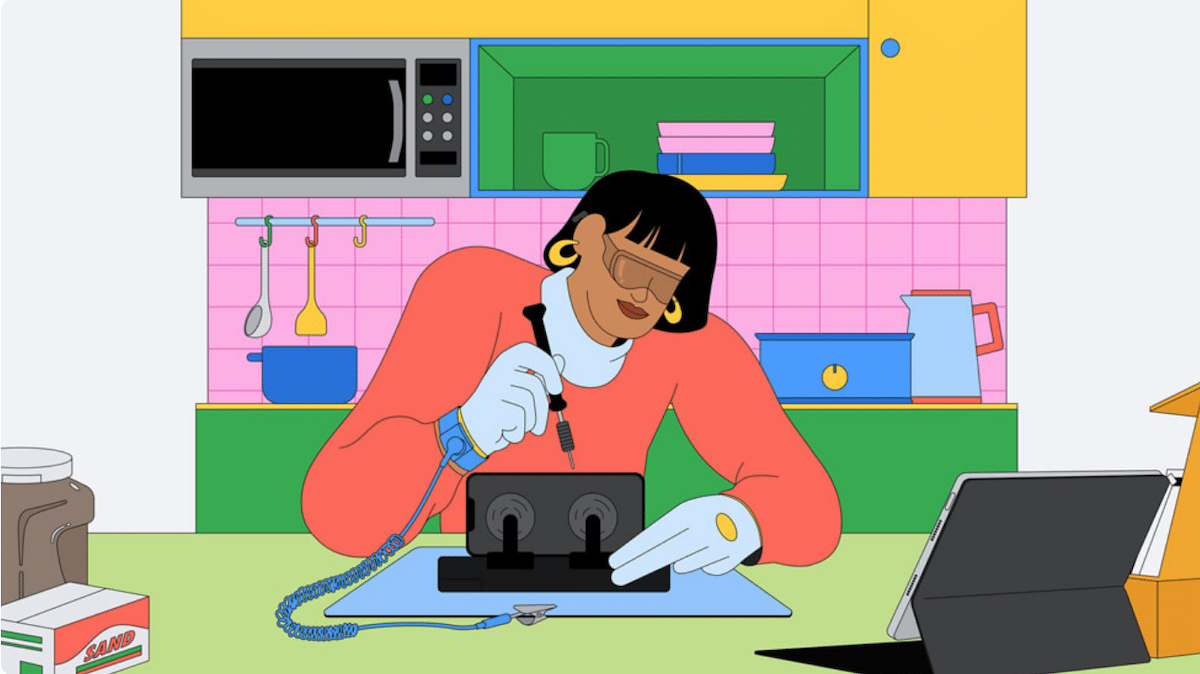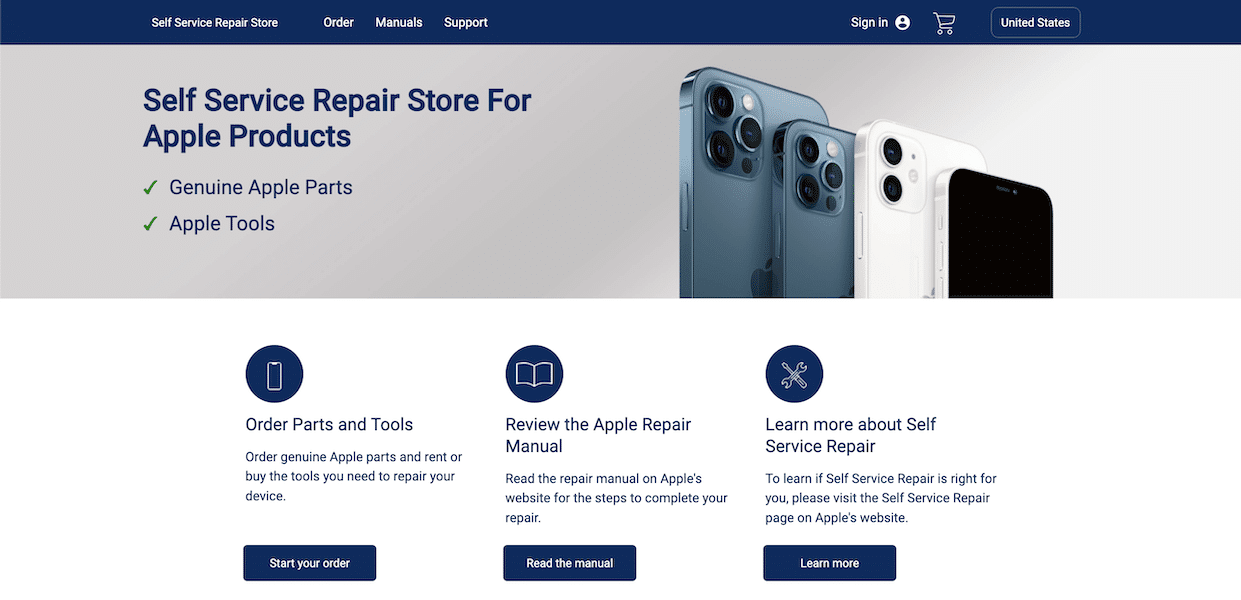Repair experts and Right to Repair advocates at iFixit are “happy” about the Apple Self Service Repair program. They are ecstatic about the availability of Apple repair manuals for free, proprietary repair tools to the public like “we’ve-been-asking-for-this-for-twenty-years happy.”

Announced in November, the Apple Self Service Repair program is now available in the United States to DYI repair the display, camera, and battery of iPhone 13, iPhone 12, and iPhone SE 2022 by ordering required genuine parts and tools directly from Apple. The company has also promised to expand the new repair service to Europe and include Apple Silicon Macs in the program.
Previously, Apple only allowed repairs through its service centers or authorized service providers which were criticized for high repair costs and adding to e-waste. The company also introduced DYI repair speed bumps in iOS of new iPhone models.

Apple Self Service Repair falls short of Right to Repair aims
When Apple launched iPhone 13 series, iFixit also highlighted the self-repair barriers imposed by the tech giant. It was found that a third-party screen repair of an iPhone 13 model disabled Face ID authentication. The Right to Repair speed bump pushed activists to strongly demand legislation against Apple’s “predatory and monopolistic behavior.”
Although the tech giant not only removed the Right to Repair speed bump in iPhone 13 screen repair, the company also announced Self Repair Program, iFixit believes that is still not enough because of its limitations.
While it’s a great step for repair, and a change of course for the mighty Apple, the program doesn’t do what Right to Repair legislation around the world aims to do. A true right to repair will give independent repair shops a chance to compete in the repair marketplace, bringing down the cost of repairs for everyone.
Unfortunately, this program expands the freedom to repair with one hand, while locking the door with the other. Integrating a serial number check into their checkout process is a dire omen and could allow Apple the power to block even more repairs in the future. Building the technology to provision individual repairs easily sets Apple up as the gateway to approve—or deny—any repairs in the future, with parts from any source.
Having said that, iFixit experts add that the Apple Self Service Repair program is better than not having one which will eventually reduce e-waste and save consumers money. They also hope that the tech giant will expand it to other models and more regions.
Read More:



